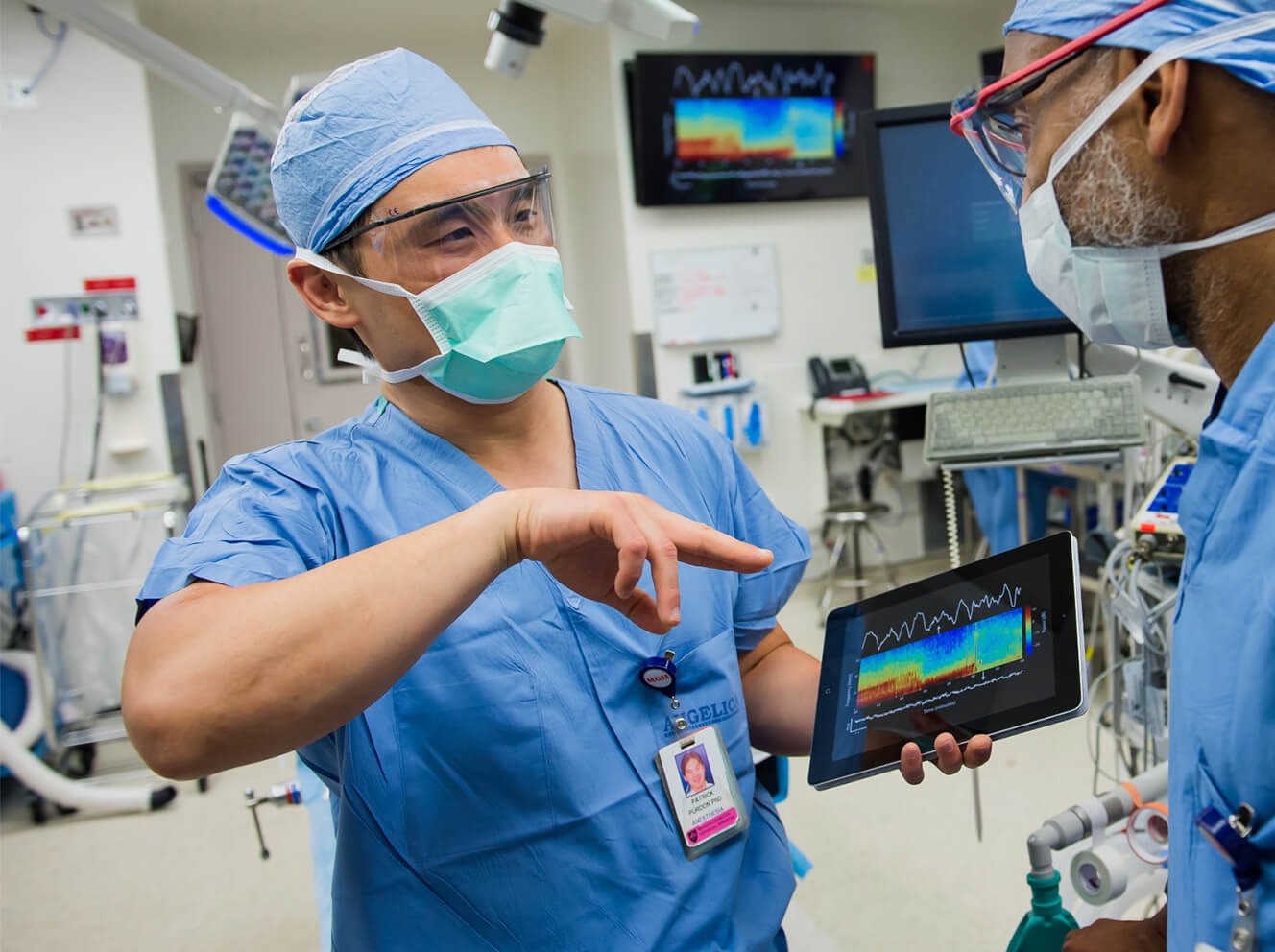With the Pandemic exacerbating an already devastating opioid epidemic, efforts to stop it have taken on new urgency. Now, an innovative study by researchers at Massachusetts General Hospital is providing new hope in this ongoing battle.
The research, led by Patrick L. Purdon, PhD, the Nathaniel M. Sims Endowed Chair in Anesthesia Innovation and Bioengineering at Mass General, suggests that fine-tuning or titrating the dosing of fentanyl (an opioid widely used during surgery) to a patient’s specific drug requirements can help prevent chronic opioid use afterwards — a tragic, unintended result for some patients.
From a Grim Reality to a Dose of Hope
Many people who chronically use opioids trace their usage to narcotics prescribed for pain after surgery. While most people stop taking their medication as their pain eases, others don’t, either because their pain persists, and/or they have developed a dependence on their medication.
Some become addicted, experiencing physical cravings and a compulsion to take opioids even when it interferes with work, family, and other life responsibilities. Indeed, between 9 and 13 percent of surgical patients chronically use opioids after surgery,†‡ says Dr. Purdon.
It turns out if patients aren’t sufficiently medicated during surgery, they are more likely to experience increased pain afterwards. They also are more likely to take pain-dulling opioids and for a longer period than patients with less post-surgical pain. Their risk for chronic use rises.
“If we can do a better job of controlling pain in surgery, we can reduce post-operative pain and the chance of addiction,” Dr. Purdon says. “Every percentage point matters,” he says, referring to the people behind the grim statistic.
Too Much or Too Little?
Working across multiple brain circuits, opioids such as fentanyl provide powerful pain relief and sedation. In the event of surgery or placement on a ventilator, they help patients tolerate intubation and surgical procedures.

With fentanyl, it’s a challenge to determine the best dose for each patient, says Dr. Purdon. Too much fentanyl may cause over-sedation and labored breathing; too little may fail to control the body’s response to the scalpel.
To monitor fentanyl’s impact, anesthesiologists look in real-time at each patient’s blood pressure and heart rate. But this, too, can prove difficult. Changes can be subtle, driven by blood loss and other factors. Unconscious patients can’t communicate.
Finding an objective clinical biomarker could help health care professionals in these settings properly adjust doses to each patient’s body chemistry.
Finding the Holy Grail — a Clinical Marker for Fentanyl
With this goal in mind, Dr. Purdon and his colleagues set out to find a biomarker that would accurately assess fentanyl’s impact on each patient. Using electroencephalogram (EEG) tests, they studied the brain waves of patients in the operating room who were administered fentanyl in advance of intubation for general anesthesia.
What they found thrilled them. Fentanyl had its own distinct EEG signature that varied according to each patient. Cross-checking this data against other vital signs, anesthesiologists could identify and deliver the optimal dose for each patient.
A Second Finding, with Chilling Implications
As part of their study, Dr. Purdon and his team also scrutinized each patient’s respiration rate. To their surprise, when patients received their first dose of fentanyl — 1,700 times lower than needed for sedation — their breathing became more shallow and less frequent. After four minutes, their respiration rate plummeted — even though their hearing remained intact. This was a surprise secondary finding of their study, and one that has major public health implications.
“Ultimately, we hope to prevent addiction — and the risk of dying from opioids, bought on the street and tainted with fentanyl.”
Patrick L. Purdon, PhD
When people unknowingly ingest fentanyl, commonly laced into heroin, cocaine and other illicit street substances, their breathing can become quickly compromised.
“This explains why fentanyl is so deadly. You stop breathing even before you realize it,” says Dr. Purdon. “There is no amount of fentanyl in street drugs that can possibly be safe.”
Sharing Findings to Save Lives
Inspired by the life-saving potential of these findings, Dr. Purdon is now working to share them and encourage support for more research, which was initially funded through the Nathaniel M. Sims Endowed Chair and later the National Institutes of Health’s National Institute on Drug Abuse.
His other goal is to develop software that will help medical professionals accurately track and titrate fentanyl administration for all patients.
“With that technology, we think we can reduce the number of surgical patients who end up chronically using opioids. Ultimately, we hope to prevent addiction — and the risk of dying from opioids, bought on the street and tainted with fentanyl.”
To make a gift or learn more about supporting the Department of Anesthesia, Critical Care and Pain Medicine, please contact us.
†Johnson SP, Chung KC, Zhong L, et al. Risk of Prolonged Opioid Use Among Opioid-Naïve Patients Following Common Hand Surgery Procedures. The Journal of Hand Surgery. 2016;41(10):947-957.e3. doi:10.1016/j.jhsa.2016.07.113
‡Jiang X, Orton M, Feng R, et al. Chronic Opioid Usage in Surgical Patients in a Large Academic Center. Ann Surg. 2017;265(4):722-727. doi:10.1097/SLA.0000000000001780

This story is just one example of the groundbreaking efforts taking place at Mass General, home to the largest hospital-based research enterprise in the U.S. — the Mass General Research Institute. The Research Institute encompasses and provides support to thousands of scientists, hundreds of laboratories, and helps to guide, connect and promote this unrivaled community of investigators as they advance the future of medicine, from the bench to the bedside, to the community and world.





